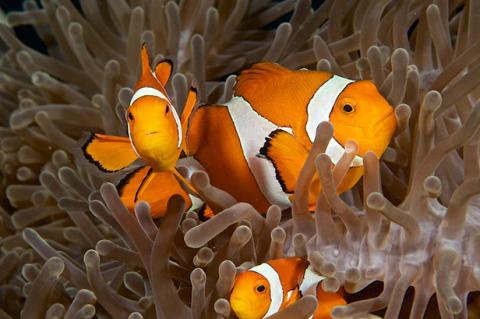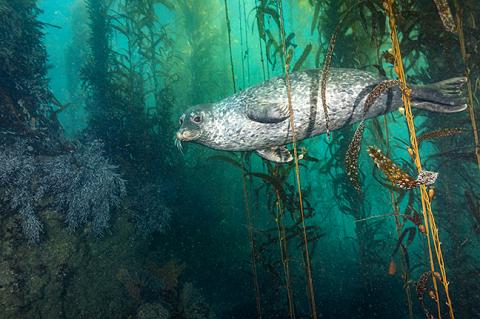X-Ray Mag #84
Is diving safe, Mike Ange asks ⏐ Brandi Muller goes to North Sulawesi, Thalassa Resort ⏐ Scottish muck diving ⏐ Oceanic Whitetip Sharks ⏐ Mark Powell: Permanent Change: When Have We Learnt ⏐ In Memoriam: Barb Roy Portfolio ⏐ Anemonefishes of the Indo-Pacific ⏐ Wrecks: The Demise of SMS Szent István ⏐ New species of Scorpionfish ⏐ How Octopus change their skin structure ⏐ Mike Bartick: The Snoot Method ⏐ Simon Pridmore: The Perimeter of Ignorance, ... and much much more
Main features in this issue include:
Analyzing the Obvious—It's About Anticipation
Is diving safe? This is a question as old as the sport itself and the potentially accurate answers fill an entire spectrum of responses. Over the past 17 years, I have studied this question intently, publishing numerous case studies and articles in addition to several books. In the last third of that period, this study was for the purposes of an academic paper in a degree program. Here is the definitive answer: It depends.
Diving is no doubt one of the safest of the adventure sports in terms of the occurrence rate of injury. Diving is also deadly.
In Memoriam: Barb Roy Portfolio
In January 2018, Barb Roy, our long-time associate editor and regular contributor, passed away after a long battle with illness. We celebrate her inspiring life and imagery in this memorial portfolio, highlighting some of the many beautiful and vivid underwater photographs Barb took during her frequent forays under the waves.
Barb was an avid technical and wreck diver, underwater photographer and instructor, having learned to dive in Anchorage, Alaska, in 1979. She was a PADI Master Instructor and held instructor ratings with DAN, IANTD and NAUI.
Indonesia's North Sulawesi
The current felt like the wind on a breezy day, and it was blowing me past the coral-covered sheer wall that disappeared over 60m (200ft) below me. Looking directly down, I noticed the color blue fading into slightly darker shades and finally into darkness, at the edge of how far I could see.
To my right was a gorgeous wall of color. Pink and purple soft corals extended fully, reaching out into the current to feed on plankton passing by and numerous giant purple barrel sponges extending away from the wall. Looking to my left into the open water was more blue and thousands of fish.
Oceanic Whitetip Sharks of Cat Island
Until quite recently, the Red Sea was generally considered as the best place to see and photograph oceanic whitetip sharks—typically in remote locations such as the Brother Islands and Elphinstone Reef in Egypt or the isolated reefs of southern Sudan.
Oceanic whitetip sharks are formidable animals that can reach almost 4m in length when fully mature and have a reputation to match their size, with Jacques Cousteau once describing them as "the most dangerous of all sharks." That said, they do not feature highly on the common shark-attack registe
Permanent Change: When Have We Learnt?
In a previous article, I discussed some of the various definitions of learning, and focused on the following definition: Learning is a permanent, observable change in behaviour. Specifically, the article explored the second part of the definition and the learning outcomes that can be used to pin down the observable change in behaviour, which we are looking for.
If our definition of learning assumes that learning involves a permanent change in behaviour, then how long is permanent? If a change occurs, but it disappears as soon as the student leaves the class, then did they learn? I think most people would say no.
Scotland: Muck Diving at Home
Do we really need to go underwater at the other end of the world (and its challenges)? Lawson Wood poses this question while comparing the muck diving found in his home country of Scotland to that found in exotic locations in Asia and other regions of the world, renown for their muck diving sites.
“Muck diving” is now a recognised, broad term for (generally) close-up and macro or micro photography, often in terrible visibility, resulting in low light and backscatter problems in photographs; and some disorientation with depth, resulting in finding deep-water critters in much shallower water
The Clowns of the Ocean: Anemonefishes of the Indo-Pacific
Anemonefish are aptly referred to as "clownfish" because of their swimming behavior. It is interesting to note that the different varieties of clownfish exhibit very different characteristics. Some are shy homebodies, some can be very aggressive, and some even share their host anemones with other species.
The entire Indo-Pacific region abounds in unique and beautiful varieties of vertebrate marine life. Scuba divers from all over the world are drawn to the Indo-Pacific by the excitement and diversity found beneath the surface of the ocean.
The Demise of SMS Szent István
During WWI, the mighty warship from the Austrian-Hungarian navy was attacked at an unexpected moment. The brave crew of two Italian torpedo boats did not falter and the Szent István was struck twice with deadly force.
It was a quiet night on 9 June 1918 when the two sister ships SMS Szent István and Tegettoff left the port of Pula (now Croatia) and set a course for Dubrovnik.
The Moon, Tides & Your Dive Trip
There are many factors to consider when planning your dive trip, including the marine life, travel logistics, seasonal weather, ocean conditions and distance between dive sites. This is a lot to think about, and likely the reason so many of us, especially photographers, forget to consider one of the ocean’s most important processes when planning a trip—the tides.
We all know that tides are primarily created by the moon’s gravity, raising and lowering the water level at the beach in daily fluctuations as the earth spins. The tides move in a pattern, making them predictable each day and in each season.
The Perimeter of Ignorance
Albert Einstein is quoted as saying, "as our circle of knowledge expands, so does the circumference of darkness surrounding it." In other words, in expanding our awareness, we just expose our ignorance. The more we come to know, the more we realise we do not know.
This makes a lot of people uncomfortable. Astrophysicist and cosmologist Neil Tyson has described what many people do in response; instead of searching further, they build a wall around what they know so they do not have to see the darkness beyond.
The Snoot Method
There are several ways to create dramatic images when you are shooting photos underwater: strong compositions, compelling behavior, exotic subject matter and of course lighting.
When I considered buying my first snoot, I was searching for a way to up my photo game a little bit and to broaden the scope of my portfolio.













